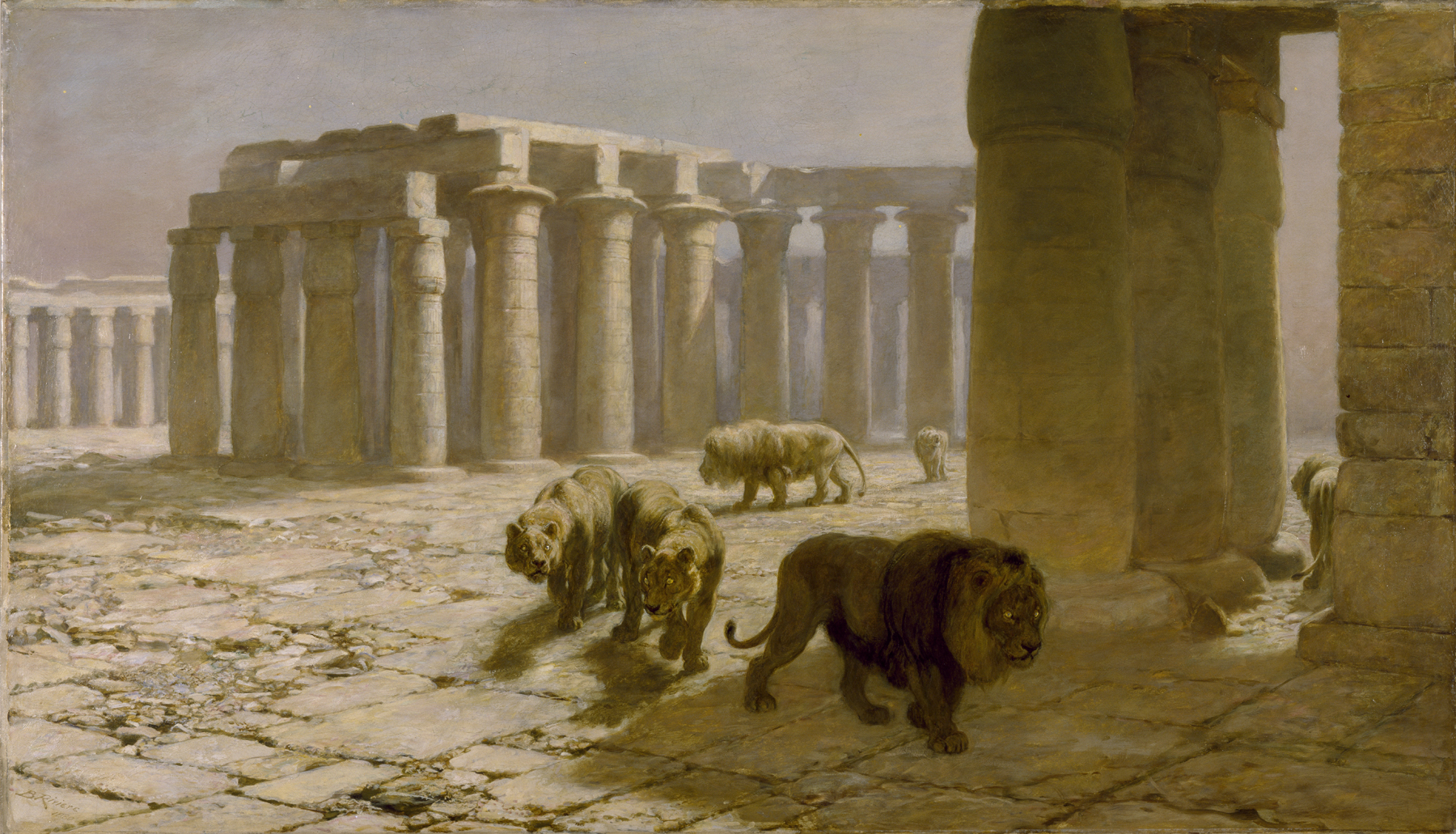Syria, The Night Watch
(18th and 19th Centuries )
In 1880 this picture, a moonlit scene in which ferocious looking lions stalk among some ancient ruins, met with a favorable reception at the Royal Academy, where it was listed simply as "The Night Watch." The reviewer for "The Art Journal" identified the setting as a temple at Luxor. The rows of columns with bud and papyriform capitals approximate in appearance those at the mortuary temple of Ramesses II at that site. By 1884 the picture had received its present title. Extracts from a letter presumably from the artist to William T. Walters, published in the early catalogues of the collection, associated the painting with Syria and its desolated ancient cities. In 1889 the critic Alfred Mathews observed that the picture was "a sermon- an intense symbolism- of the seeming slow but always swift mutations of time in the affairs of men and nations."
Inscription
Provenance
Provenance (from the French provenir, 'to come from/forth') is the chronology of the ownership, custody, or location of a historical object. Learn more about provenance at the Walters.
Goupil, 1883 [from Henry Walters handwritten notebook, 1887, no. 19]; William T. Walters, Baltimore, 1883, by purchase; Henry Walters, Baltimore, 1894, by inheritance; Walters Art Museum, 1931, by bequest.
Exhibitions
| 2014-2016 | From Rye to Raphael: The Walters Story. The Walters Art Museum, Baltimore. |
| 1880 | [Exhibition title unknown, held at the Royal Academy, London]. Royal Academy of Arts, London. |
Conservation
| Date | Description | Narrative |
|---|---|---|
| 3/25/1976 | Treatment | surface cleaned; stabilized; varnish removed; loss compensation; coated; lined; inpainted |
| 8/1/1991 | Treatment | inpainted |
| 6/1/2000 | Treatment | repaired; impainted |
Measurements
H: 38 x W: 66 1/16 in. (96.5 x 167.8 cm); Framed H: 57 x W: 85 x D: 7 in. (144.8 x 215.9 x 17.8 cm)
Credit Line
Acquired by William T. Walters, 1883
Location in Museum
Not on view
Accession Number
In libraries, galleries, museums, and archives, an accession number is a unique identifier assigned to each object in the collection.
In libraries, galleries, museums, and archives, an accession number is a unique identifier assigned to each object in the collection.
37.84


